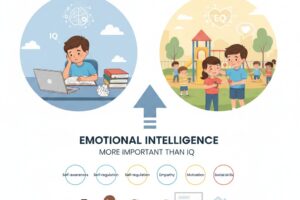Key Takeaways:
E-learning helps organizations foster respectful, productive, and diverse workplaces by making training accessible and consistent for all employees. It enables flexible education on unconscious bias, microaggressions, and cross-cultural understanding. Through interactive modules and self-paced learning, e-learning empowers individuals to reflect, grow, and build inclusive skills that support lasting organizational change.
Table of Contents:
- Introduction
- E-Learning: Accessible and Scalable Learning for Diversity
- Interactivity and Engagement in E-Learning
- Standardization and Consistency in Training
- Continuous Improvement and Updated Content
- Measuring Impact and Tracking Progress
- Conclusion
Introduction
Diversity and inclusion have become crucial pillars of productive and positive work environments. As organizations continue to recognize the value of varied perspectives and equitable opportunity, the need for practical training has never been more critical. E-learning offers a transformative approach for organizations that foster these values across diverse teams. With technology-driven platforms, it is possible to deliver inclusive learning experiences that reach every workforce segment, regardless of location, schedule, or role. This article explores how e-learning drives momentum for diversity and inclusion in today’s professional workplaces, highlighting digital learning methods’ unique advantages and practical impact.
E-Learning: Accessible and Scalable Learning for Diversity
E-learning has revolutionized the accessibility of diversity and inclusion education. By eliminating the boundaries of time and place, digital courses make it practical for organizations of all sizes and locations to provide targeted learning opportunities for everyone. Traditional in-person instruction may be limited by scheduling conflicts, geographic dispersion, or resource constraints. Still, e-learning platforms allow employees to participate in training sessions from anywhere and at any time. This flexibility is compelling for businesses with remote teams or offices across different regions.
Furthermore, e-learning platforms can accommodate various learning styles and backgrounds. Modules may include videos, quizzes, animations, and real-life scenarios that engage visual, auditory, and kinesthetic learners alike. Because engaging is self-paced, participants can revisit challenging concepts or take the time necessary for thorough understanding. This ensures that all employees, regardless of role or experience, can benefit equally from structured diversity and inclusion education.
E-learning enables organizations to deliver training efficiently during rapid growth, mergers, or significant policy updates. Instead of organizing multiple instructor-led sessions, a single online curriculum can be scaled to thousands of users. This approach ensures that every team member starts with the same foundational understanding, helping to create a unified culture built on respect and empathy.
Interactivity and Engagement in E-Learning
Engaging employees in diversity and inclusion learning is essential for knowledge to translate into real behavioral change. E-learning platforms can use interactive features like role-playing scenarios, gamified challenges, and reflective assessments to deepen understanding and encourage self-reflection. By simulating everyday workplace interactions, these tools prompt learners to recognize subtle biases, practice empathetic responses, and understand the impact of their words and actions.
Interactive features also make the learning journey more personalized and effective. For instance, scenario-based quizzes allow learners to explore the outcomes of different choices and see the implications of their decisions in a safe, risk-free environment. This experiential approach moves beyond theory, helping to reinforce concepts in memorable and meaningful ways. Many platforms provide immediate feedback, allowing individuals to track their progress and focus on areas needing further attention.
The engaging nature of digital learning leads to greater course completion rates and higher knowledge retention. Since employees become active participants, rather than passive recipients, e-learning creates a more impactful connection to the core messages behind diversity and inclusion.
Standardization and Consistency in Training
Ensuring all employees receive consistent diversity and inclusion education is essential for effective policy implementation and organizational culture. E-learning provides a structured curriculum that can be standardized across different departments, locations, and roles. This consistency is difficult to achieve through in-person instruction, where trainers may interpret guidelines differently or present material with unique biases.
With e-learning, every employee accesses the duplicate high-quality content, ensuring a unified understanding of company values, policies, and expected behaviors. This uniformity reduces the risk of misunderstandings and helps to reinforce the organization’s commitment to an inclusive work environment. It also makes compliance with legal and ethical requirements more manageable, as every staff member can be easily held to the same training standards.
Organizations benefit from the ability to update digital courses immediately, ensuring that every team member receives the most current information when policies or regulations change. Standardized e-learning creates a level playing field where everyone, from new hires to senior managers, has the same tools and knowledge for nurturing a respectful workplace.
Continuous Improvement and Updated Content
Diversity and inclusion are dynamic fields that evolve as new social norms, research, and best practices emerge. E-learning platforms support ongoing development by allowing organizations to regularly update course materials in response to changes in laws, company policies, or global events. This flexibility ensures that training remains relevant and actionable for every learner.
Regular training content updates also allow organizations to reflect real employee experiences or address new workplace scenarios, making the learning experience more relatable and impactful. Furthermore, the ability to introduce new topics—such as neurodiversity, generational differences, or evolving gender identities—keeps employees informed and equipped for modern workplace dynamics.
E-learning provides the infrastructure for continuous improvement, giving organizations confidence that their diversity and inclusion initiatives are keeping pace with change. Learners are empowered to revisit materials as needed, reinforcing positive habits and maintaining awareness of inclusive practices over time.
Measuring Impact and Tracking Progress
One significant advantage of e-learning for diversity and inclusion is the ability to measure engagement and track progress throughout the course, including measuring engagement and tracking data on course completion, assessment outcomes, and participant feedback. This data helps employers identify which areas need reinforcement, which concepts are well understood, and where further resources may be necessary.
The data-driven e-learning approach allows companies to assess the effectiveness of their diversity and inclusion strategy objectively. Managers can analyze trends, monitor improvements, and set goals for future training efforts. Demonstrating tangible progress is valuable for reporting purposes and reinforcing the organization’s continuous development.
E-learning systems can also automatically send reminders for mandatory training or recommend follow-up modules based on an employee’s performance. This ensures ongoing compliance and engagement with diversity and inclusion initiatives, helping to sustain a culture that values learning and growth.
Conclusion
E-learning is a pivotal tool for promoting diversity and inclusion across modern workplaces. By providing accessible, engaging, and standardized training, organizations can effectively reach every employee and create a shared understanding of what it means to work within an inclusive culture. The ability to work in a team ensures ongoing relevance, while integrated data analytics delivers valuable insights that drive continuous improvement. Ultimately, e-learning is an investment in compliance and cultivating a work environment where every individual is respected, heard, and valued. This commitment leads to a more innovative, supportive, and competitive organization poised for long-term success in today’s diverse world.












